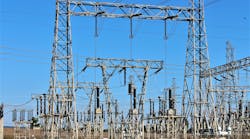Electrical energy consumption of the residential sector is a crucial area of research that has in the past primarily focused on increasing the efficiency of household devices such as water heaters, dishwashers, air conditioners, and clothes washer and dryer units. However, the focus of this research is shifting as objectives such as developing the smart grid and ensuring that the power system remains reliable come to the fore, along with the increasing need to reduce energy use and costs. Load research has started to focus on mechanisms to support the power system through demand reduction and/or reliability services.
The power system relies on matching generation and load, and day-ahead and real-time energy markets capture most of this need. However, a separate set of grid services exist to address the discrepancies in load and generation arising from contingencies and operational mismatches, and to ensure that the transmission system is available for delivery of power from generation to load. Currently, these grid services are mostly provided by generation resources. The addition of renewable resources with their inherent variability can complicate the issue of power system reliability and lead to the increased need for grid services. Using load as a resource, through demand response programs, can fill the additional need for flexible resources and even reduce costly energy peaks. Loads have been shown to have response that is equal to or better than generation in some cases. Furthermore, price-incentivized demand response programs have been shown to reduce the peak energy requirements, thereby affecting the wholesale market efficiency and overall energy prices.
The residential sector is not only the largest consumer of electrical energy in the United States, but also has the highest potential to provide demand reduction and power system support, as technological advancements in load control, sensor technologies, and communication are made. The prevailing loads based on the largest electrical energy consumers in the residential sector are space heating and cooling, washer and dryer, water heating, lighting, computers and electronics, dishwasher and range, and refrigeration. As the largest loads, these loads provide the highest potential for delivering demand response and reliability services.
Many residential loads have inherent flexibility that is related to the purpose of the load. Depending on the load type, electric power consumption levels can either be ramped, changed in a step-change fashion, or completely removed. Loads with only on-off capability (such as clothes washers and dryers) provide less flexibility than resources that can be ramped or step-changed. Add-on devices may be able to provide extra demand response capabilities. Still, operating residential loads effectively requires awareness of the delicate balance of occupants health and comfort and electrical energy consumption.
This report is Phase I of a series of reports aimed at identifying gaps in automated home energy management systems for incorporation of building appliances, vehicles, and renewable adoption into a smart grid, specifically with the intent of examining demand response and load factor control for power system support. The objective is to capture existing gaps in load control, energy management systems, and sensor technology with consideration of PHEV and renewable technologies to establish areas of research for the Department of Energy.
In this report, (1) data is collected and examined from state of the art homes to characterize the primary residential loads as well as PHEVs and photovoltaic for potential adoption into energy management control strategies; and (2) demand response rules and requirements across the various demand response programs are examined for potential participation of residential loads. This report will be followed by a Phase II report aimed at identifying the current state of technology of energy management systems, sensors, and communication technologies for demand response and load factor control applications for the residential sector. The purpose is to cover the gaps that exist in the information captured by the sensors for energy management system to be able to provide demand response and load factor control. The vision is the development of an energy management system or other controlling enterprise hardware and software that is not only able to control loads, PHEVs, and renewable generation for demand response and load factor control, but also to do so with consumer comforts in mind and in an optimal fashion....(read more...)

